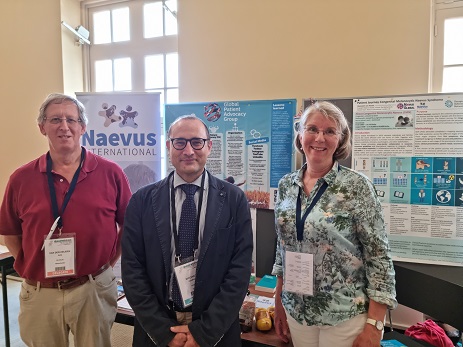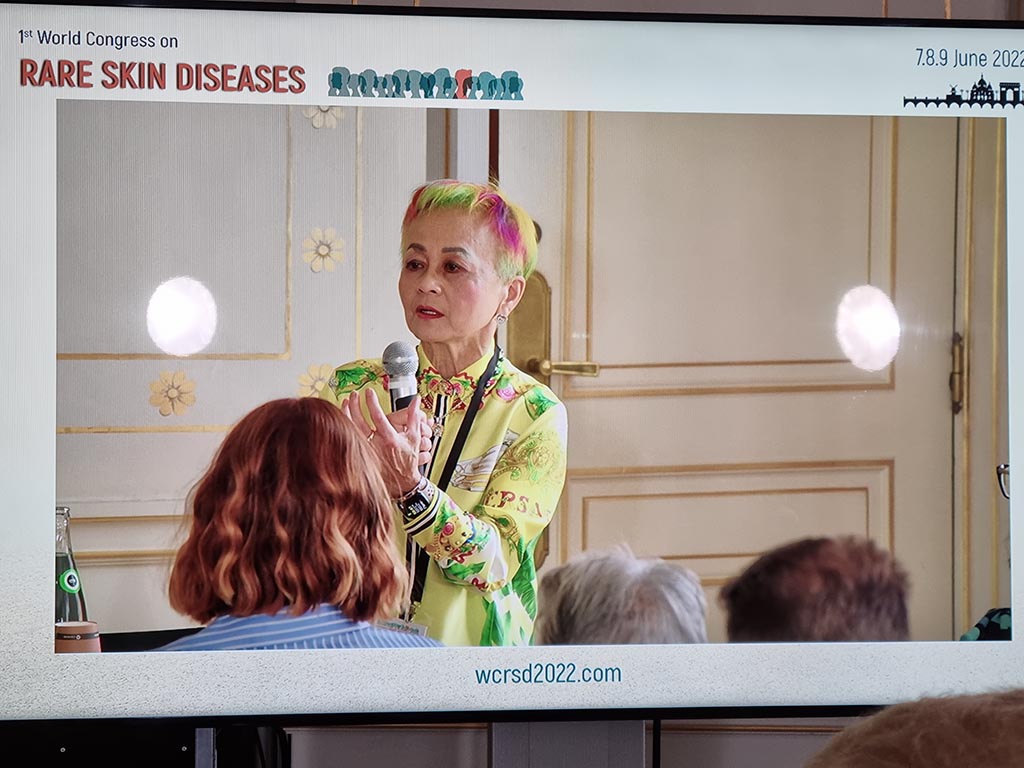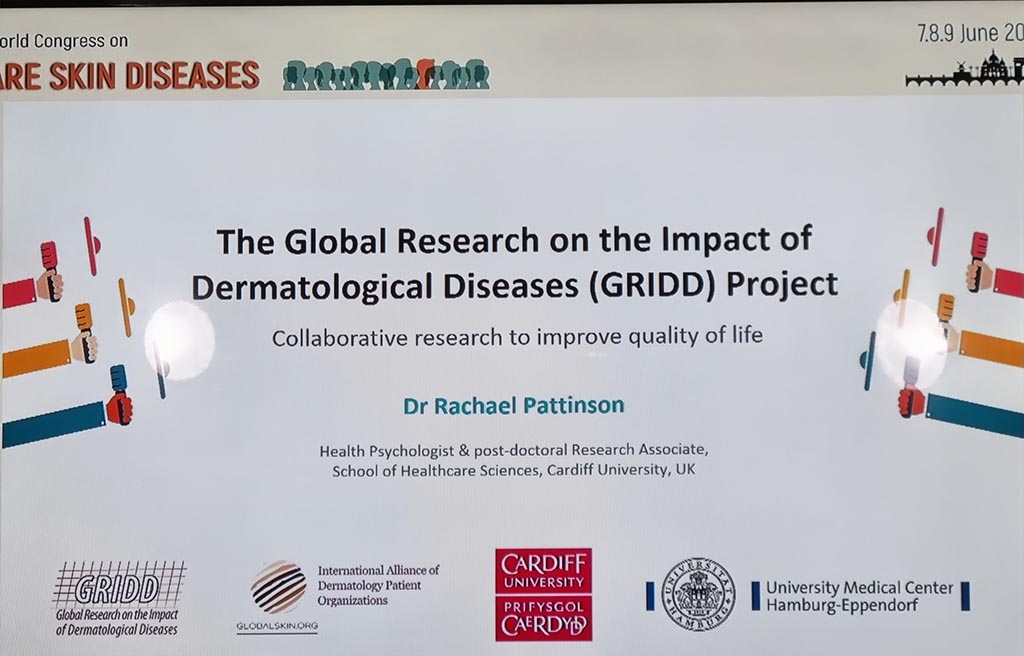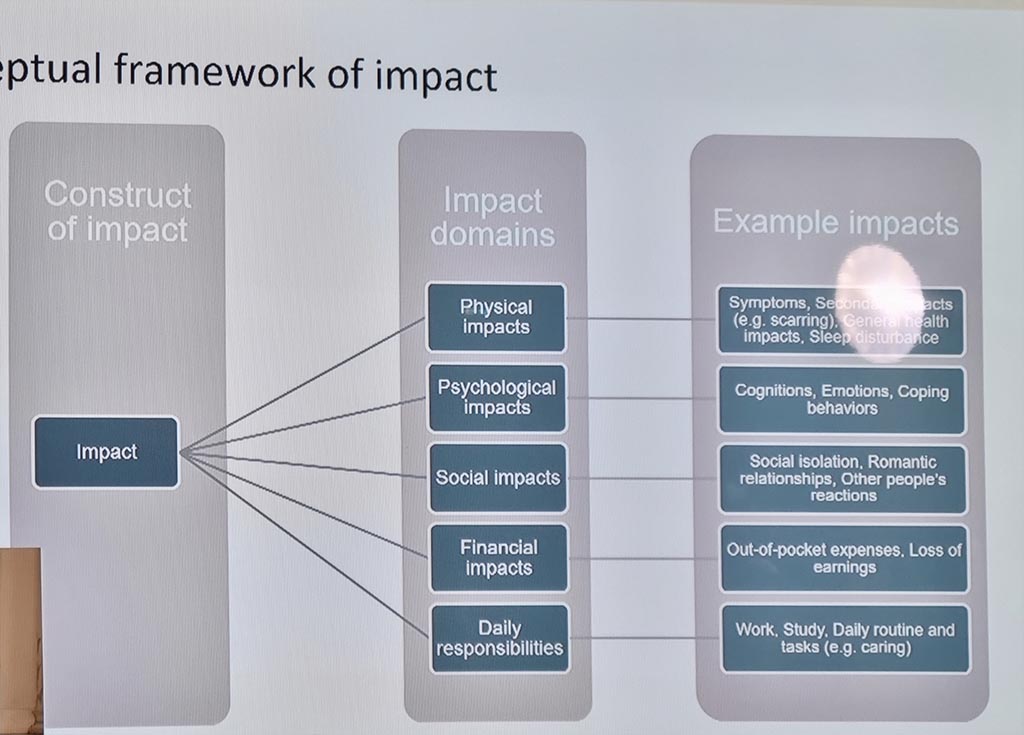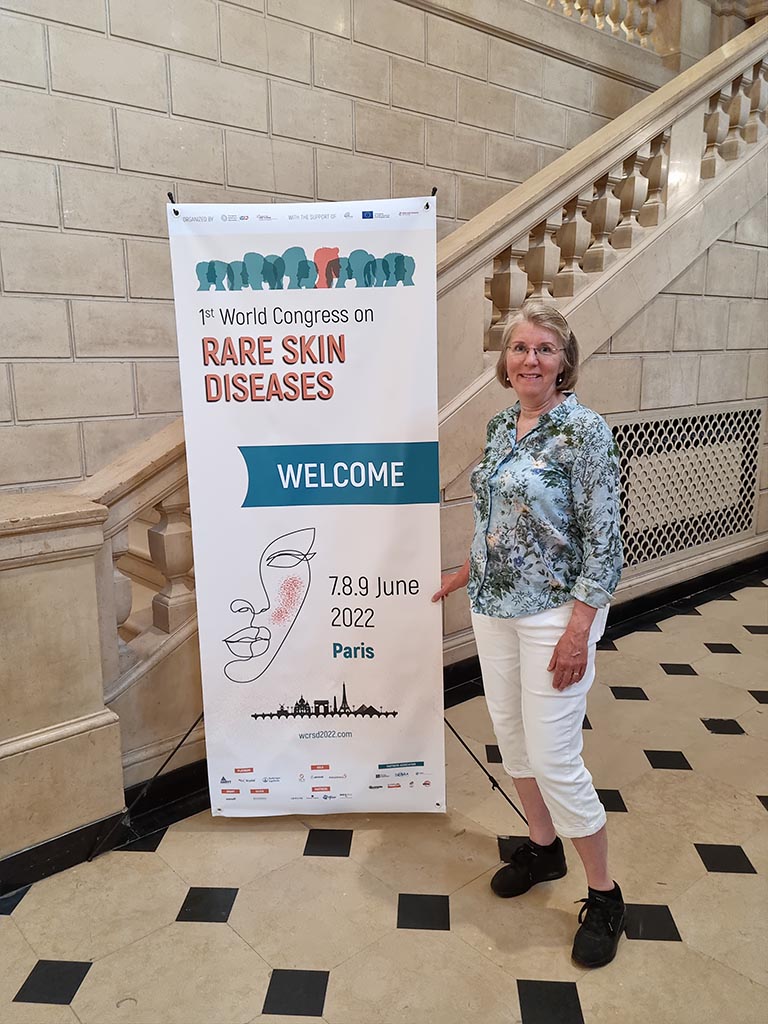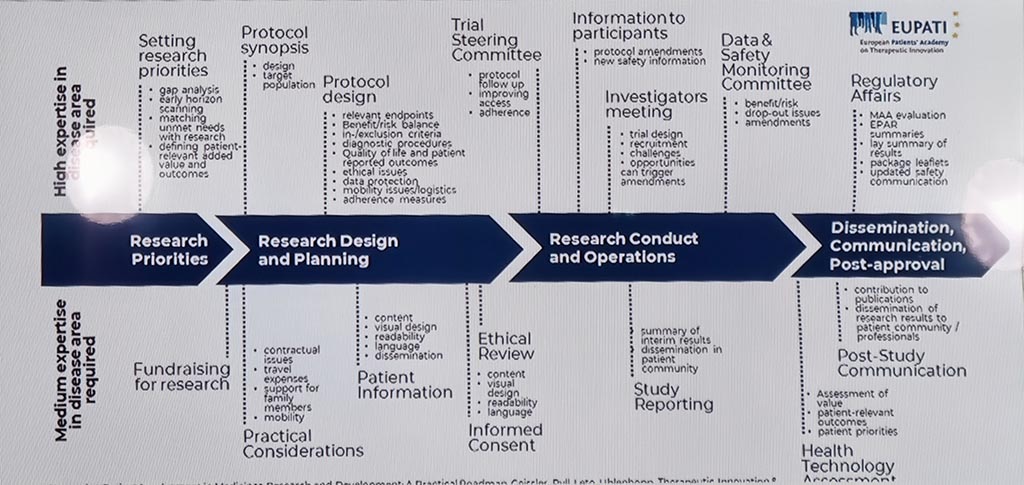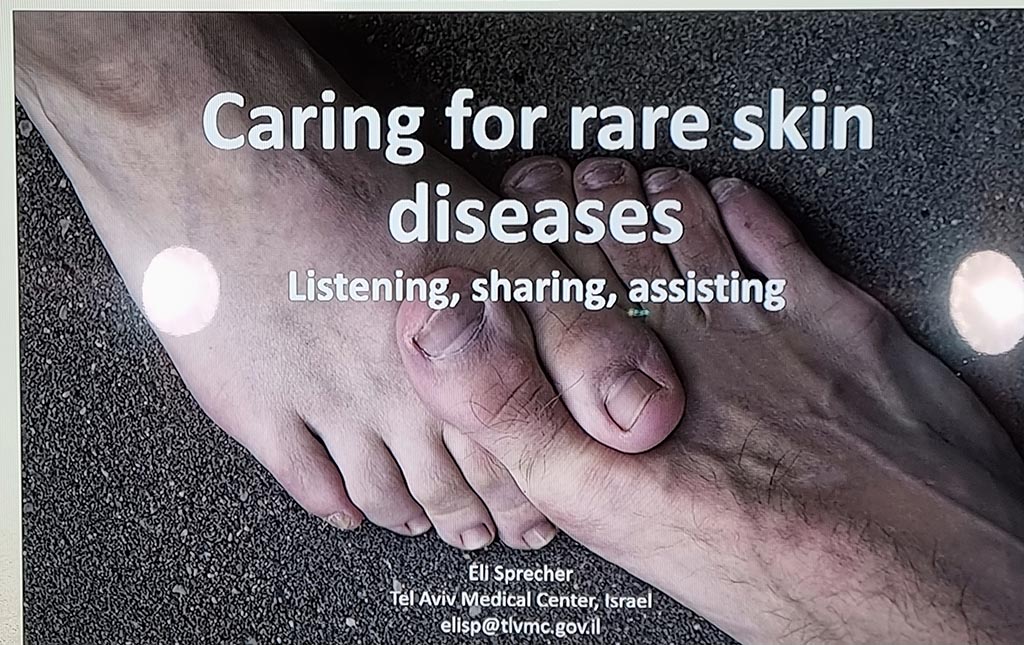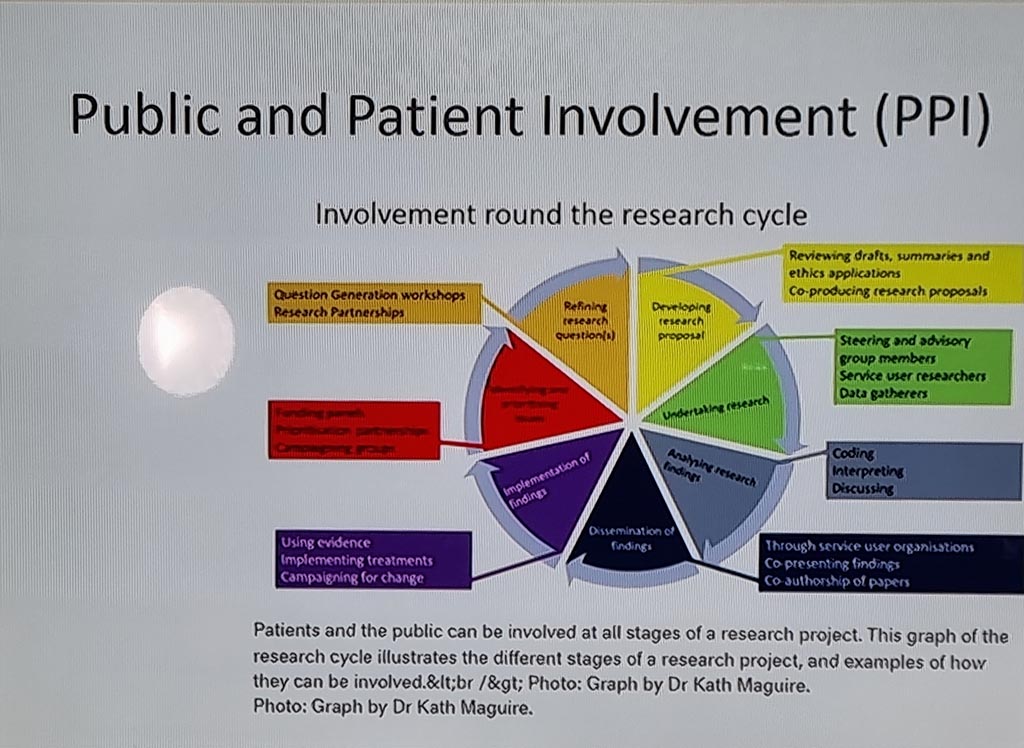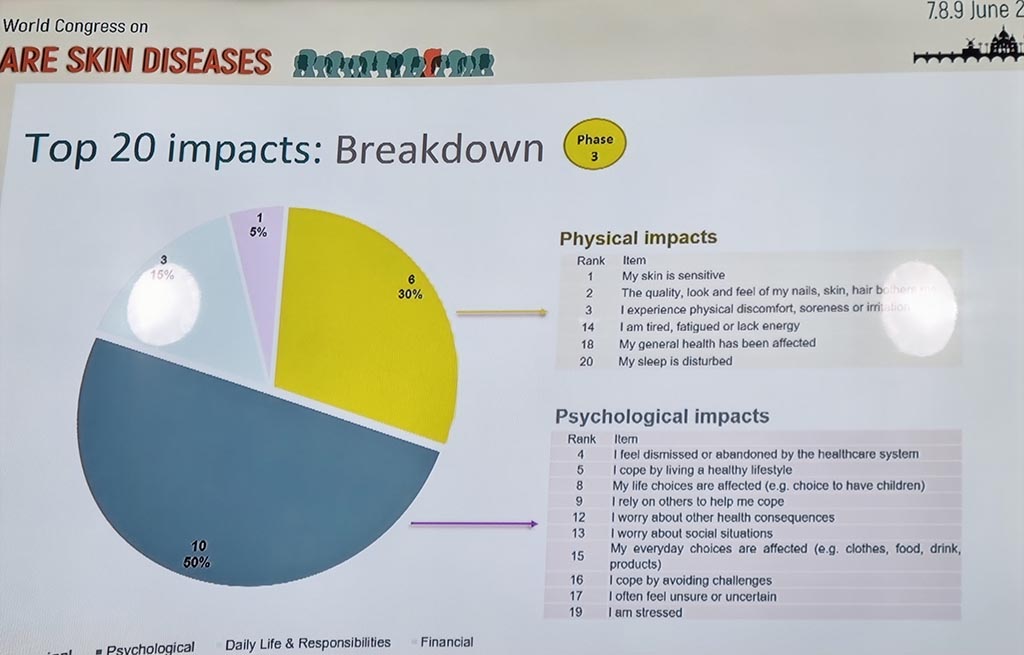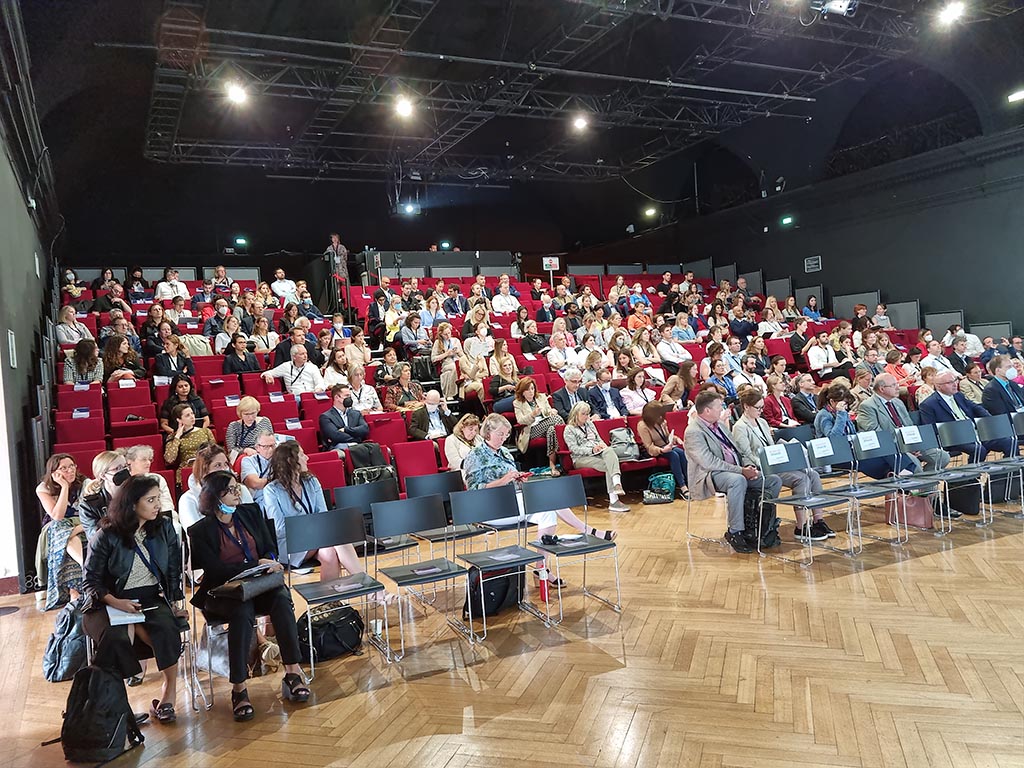Van 7 tot en met 9 juni 2022 werd in Parijs voor het eerst het Global Congress on Rare Skin Diseases (WCRSD) georganiseerd.
Het doel was medische teams, wetenschappers, patiëntenvertegenwoordigers, beleidsmakers en industriële teams samen te brengen. Het gemeenschappelijke doel was de samenwerking tussen specialisten uit verschillende centra en landen te stimuleren en om meer onderzoek en klinische proeven te doen om de patiëntenzorg en de kwaliteit van leven te verbeteren. Daarnaast wilde men de jongere generatie steeds meer betrekken bij de behandeling van zeldzame huidaandoeningen.
De locatie was een prachtig gebouw van de internationale universiteit.
Stand
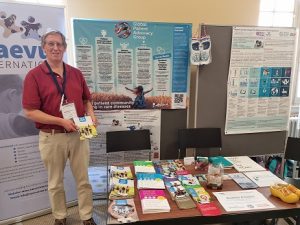
In de grote zalen waren stands van de grote farmaceutische bedrijven en wij hadden een kleine stand in de hal. Wat ons opviel was dat wij meer bezoekers kregen dan de farmaceutische bedrijven.
Onze stand was kleurrijk en wij waren veel aanwezig. Uiteraard hadden wij ook weer (kleine) stroopwafels meegenomen die op de tafel stonden. Dit blijkt iedere keer weer een aandachtstrekker te zijn.
Onze nieuwe brochures ‘Ouders Ondersteuningsgids’ waren in een dag tijd zo’n beetje op.
Zeldzame ziekten feiten
Zeldzame ziekten feiten op een rijtje:
- Op dit moment zijn meer dan 7.000 zeldzame ziekten beschreven.
- Rond 300 miljoen mensen over de gehele wereld hebben tenminste (!) 1 zeldzame aandoening.
- De oorzaak van 72% van deze zeldzame ziekten is genetisch.
- Rond 70% van deze zeldzame aandoeningen raakt kinderen waarvan 30% overlijdt voor hun 5e levensjaar.
- Momenteel is voor 5% van deze ziekten een behandeling (plm. 350).
Belasting op het gezin en het dagelijkse leven
Naast de medische problemen moeten ook de belasting op het gezin en het dagelijkse leven niet worden onderschat. Denk hierbij aan de emotionele impact (niet alleen op de patiënt maar op het gehele gezin).
- Gebrek aan behandelingsmogelijkheden.
- Slechte zorgcoördinatie.
- Verborgen kosten.
- Problemen rond het krijgen van een juiste diagnose. Mogelijk krijgt de patiënt nooit en juiste diagnose.
Een aantal uitdagingen op een rijtje waar patiënten en hun families mee te maken (kunnen) hebben:
- Laag bewustzijn bij het brede publiek over het leven met een zeldzame ziekte.
- Krijgen van de juiste diagnose kan lang duren en is uitdagend.
- Onderzoek en ontwikkeling (verzamelen van gegevens, (privacy) wetgeving, internationale samenwerking, etc.).
- Toegang tot behandeling (gelijke rechten zeldzame ziekten patiënten, kosten, etc.).
Dr. Dr. Rudolf Happle
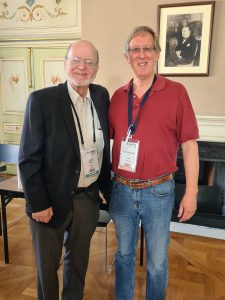
Samenvatting
Cutis marmorata telangiectatica congenita (CMTC) wordt gekenmerkt door grofmazige capillaire misvormingen gerangschikt in asymmetrisch verdeelde plekken. De aandoening kan gepaard gaan met hyper- of hypoplastische ledematen, syndactylie, gespleten gehemelte en glaucoom. Omdat de ziekte meestal sporadisch voorkomt, werd ongeveer 30 jaar geleden het concept voorgesteld van een dodelijke mutatie die overleeft door mosaïcisme. Hier beschrijven we drie kinderen met CMTC als gevolg van een postzygote GNA11-mutatie c547C > T (p.Arg183Cys), gedocumenteerd in speeksel (patiënt 1) of beschadigd huidweefsel (patiënten 2 en 3). Alle drie de individuen hadden wijdverbreide en asymmetrische CMTC die vanaf de geboorte aanwezig was en tijdens de eerste levensjaren zwakker werd. Variabel geassocieerde anomalieën omvatten glaucoom, misvorming van de choroïdale capillairen en asymmetrie van het lichaam. In eerdere casusrapporten werden postzygote GNA11-mutaties gedocumenteerd in twee gevallen van phacomatosis cesiomarmorata, gekenmerkt door CMTC naast segmentale dermale melanocytose. Bovendien werden postzygote GNA11-mutaties opgemerkt bij twee CMTC-patiënten beschreven onder de onjuiste diagnose “naevus vascularis mixtus”. Daarom ondersteunen de huidige casussen op overtuigende wijze het concept dat CMTC kan worden veroorzaakt door mozaïek GNA11-mutaties en dus behoort tot het GNA11-gerelateerde capillaire naevus (GNARCAN)-spectrum. In twee andere bonafide gevallen van CMTC konden we echter geen mutatie in GNA11 vinden, wat kan worden verklaard door ons onvermogen om een zeer laag percentage mutante cellen te detecteren of door genetische heterogeniteit van het fenotype.
Hele artikel Cutis marmorata telangiectatica congenita being caused by postzygotic GNA11 mutations
Jennifer Austin
Jennifer is de CEO van de Global Skin organisatie welke is gevestigd in Canada (wij zijn ook lid van deze organisatie).
Presentatie Prof. Dr. Miikka Vikkula (alleen voor leden)
Miikka is een van onze adviseurs.
This content is restricted!
